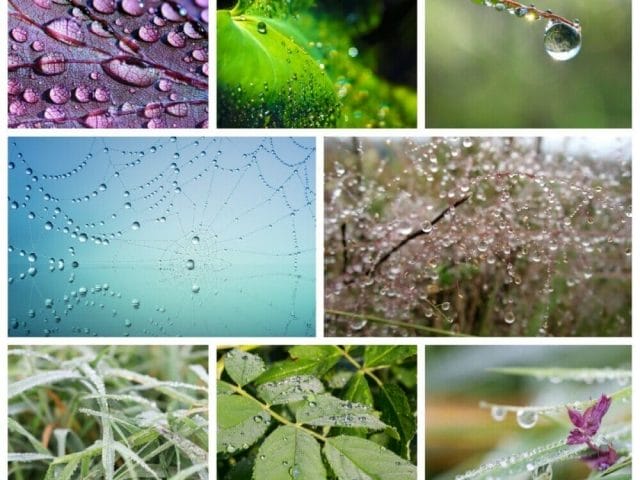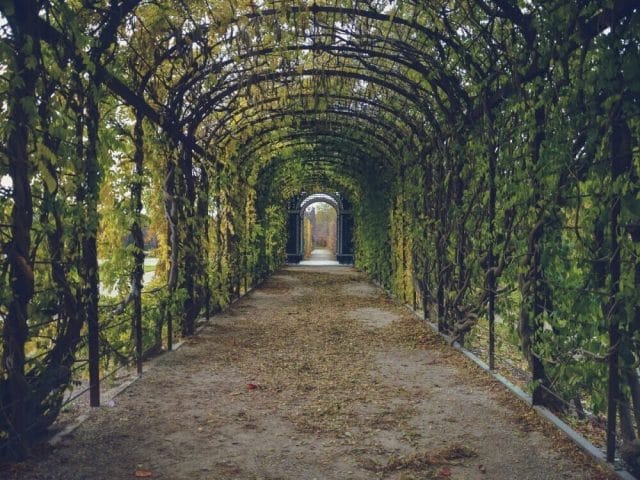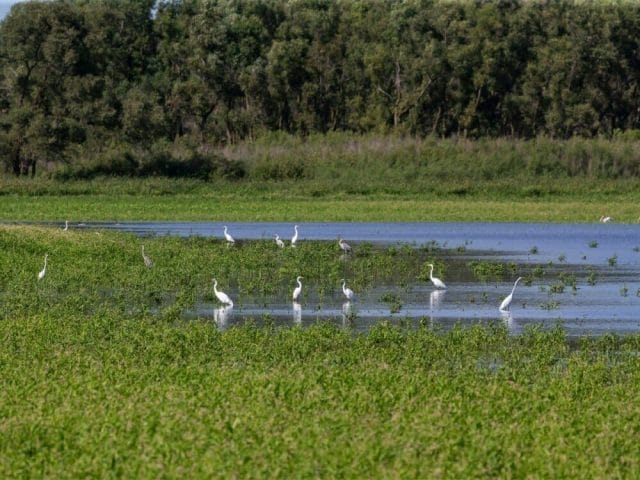Looking for a way to boost your photography skills while finding tranquility in the natural world? These eight mindful nature photography projects will not only help you capture stunning images, they also nurture a deeper connection with the environment. Each project is a gentle invitation to explore, observe, and express your unique artistic vision.
Introduction to Mindful Nature Photography
Mindful nature photography combines the art of capturing the natural world with the practice of mindfulness. This approach not only enhances your creativity but helps in cultivating a deeper connection with nature. By focusing on the present moment and observing your surroundings, you can create more meaningful and inspired photographs.
Engaging in mindful photography has several benefits. It encourages slowing down and paying attention to the details, which can be a calming and therapeutic experience. This practice can reduce stress and anxiety, making it a perfect way to disconnect from the hustle and bustle of everyday life. Moreover, it fosters a sense of appreciation and gratitude for the beauty of the natural world.

Understanding mindful nature photography projects means immersing yourself in nature and approaching photography with intention and awareness. These projects are designed to inspire creativity by encouraging one to look at nature from different perspectives and capture its essence in unique ways.
Let’s explore various projects that will challenge you to see beyond the obvious and discover the hidden beauty in your surroundings, and enhance your connection with nature. Whether you’re a beginner or an experienced photographer, these projects offer something for everyone.
Project 1: Morning Dew Drops
Morning dew drops capture nature at its freshest, offering a perfect subject for mindful photography. To begin, head out early in the morning when the world is still waking up. The calmness of this time of day contributes to a peaceful and focused photography session.
To capture the beauty of dew drops, make sure to get close to your subject. A macro lens can be incredibly useful here, allowing for detailed shots of the tiny droplets. If you don’t have a macro lens, don’t worry. Using the macro mode on your camera or even a smartphone with a good camera setting can work well too.
Focus on the light. Early morning light is soft and diffused, ideal for highlighting the shimmer and transparency of dew drops. Position yourself so the light catches the droplets just right, creating a magical sparkle effect. Take your time to experiment with different angles and compositions, paying close attention to how the light interacts with the drops.
Consider incorporating other elements of nature to add depth to your shots.

The leaves of a plant, a spider’s web, or blades of grass can serve as beautiful backdrops or frame your subject interestingly.
Additionally, slow down and take in the tranquility of the early morning. Then the calmness can translate into your photographs, bringing a sense of peace and stillness. Be mindful of your breathing and movements, making each shot deliberate and considered. This mindful approach allows for more thoughtful compositions and creates a connection between you and the natural elements you are photographing.
This project not only hones your technical skills but also deepens your appreciation for the small details in nature. By focusing on morning dew drops, you’ll find yourself more attuned to the beauty that often goes unnoticed.
Project 2: Forest Bathing Through the Lens
Forest bathing, or ‘Shinrin-yoku,’ is about immersing yourself in the atmosphere of the forest. This practice, originating from Japan, is designed to reduce stress and enhance well-being by connecting closely with nature. When combined with photography, forest bathing encourages a deeper, more mindful interaction with the environment.
To start, choose a forest or woodland area where you feel comfortable. Take your time wandering through the trails, allowing the sights, sounds, and smells to envelop you. Rather than rushing to find the perfect shot, allow the forest to reveal its secrets slowly. Notice the play of light through the leaves, the textures of bark, and the myriad shades of green and brown.
Photographing the essence of the forest means capturing both the grand and the small. Wide-angle shots that showcase the vastness of the woodland can convey a sense of wonder and tranquility.

Meanwhile, close-ups of leaves, fungi, or moss add intricate details and texture to your portfolio.
Use natural light to your advantage. The forest canopy often filters sunlight in unique ways, creating dappled patterns on the forest floor. Experiment with backlighting or side lighting to highlight these effects. If need be, adjust your camera settings to play with different levels of exposure, and don’t hesitate to take multiple shots to find the best results.
Forest bathing through photography isn’t just about the final images. It’s about the journey and the connection you build with nature. By embracing this mindful approach, you’ll find yourself more relaxed and creatively inspired, ready to capture the forest’s true spirit.
Project 3: The Hidden World of Macrophotography
Macrophotography unveils the intricate details of nature that often go unnoticed. This project invites you to explore and document the tiny wonders around you. From insects to dew drops, there’s a hidden world waiting to be discovered.
Start by equipping yourself with the right tools. A dedicated macro lens is ideal, but extension tubes or close-up filters can also help you achieve detailed close-ups. Even a smartphone with a macro attachment can work wonders. Ensuring you have the right gear is the first step to successful macrophotography.
Next, focus on lighting. Natural light is your best ally, so shoot during the golden hours of early morning or late afternoon. These softer light conditions help enhance textures and details. If natural light isn’t sufficient, consider using a ring light or a small LED light to illuminate your subject without creating harsh shadows.
Patience is key in macrophotography.

Given the small scale of your subjects, even a slight breeze can make focusing difficult. Use a tripod for stability and a remote shutter release to minimize camera shake. Take deep breaths and move slowly, allowing yourself to be fully present in the moment. Mindfulness plays a significant role here. Observe the minute details of your subjects—the veins of a leaf, the delicate wings of a butterfly, the tiny hairs on a bee. By slowing down and paying close attention, you can capture the unique beauty that others might miss.
Finally, composition matters. Experiment with different angles and perspectives. Don’t be afraid to get low or even lie on the ground to get the perfect shot. Look for contrasting colors or textures that can make your subject stand out. Remember, the goal is to highlight the extraordinary in the ordinary. Macrophotography offers a meditative experience. It encourages slowing down and appreciating the fine details of nature. Through this project, you’ll develop a deeper understanding and admiration for the small, yet significant, aspects of the natural world.
Project 4: Chasing Light and Shadows
Photographing light and shadows adds a dramatic element to nature photography, making it an exciting challenge for the mindful photographer. The interplay between light and dark can reveal textures, shapes, and patterns that might otherwise go unnoticed.
Begin by observing how light interacts with different elements in nature. Early morning and late afternoon light, often referred to as the golden hours, provide the best conditions for capturing striking light and shadow contrasts. Look for subjects that stand out when hit by angled light, like tree trunks, leaves, or rock formations.
Experiment with various compositions. Silhouetting is a great technique that plays with light and shadow. For instance, position yourself so that the sun is behind your subject, turning it into a dark outline against a bright background. This can create powerful and evocative images that speak volumes despite their simplicity.
Play with shadows to add depth and intrigue. Notice how they change as you alter your angle or as the light changes throughout the day. Don’t be afraid to shoot both the shadows themselves and the subjects casting them. Shadows can create leading lines or patterns that guide the viewer’s eye through the image. A mindful approach to this project involves being fully aware of the changing light.

Take a moment to appreciate how the light feels on your skin, how it changes the colors of your surroundings, and how it brings certain elements into focus while casting others into obscurity. This awareness can lead to more intentional and inspired compositions.
Using reflective surfaces like water or metallic objects can add another layer of complexity. These surfaces can create double images or distortions, making the interplay of light and shadow even more fascinating. Reflection photography requires patience as you wait for the perfect light and angle, turning it into a truly mindful practice.
Through this project, you’ll develop a keen eye for noticing how light interacts with the natural world. You’ll begin to see the beauty in the contrasts and the stories told by light and shadow. By mindfully chasing light, you’ll capture moments that are often fleeting but profoundly beautiful.
Project 5: Reflections and Still Waters
Reflections and still waters can create some of the most tranquil and stunning nature photographs. The key is to find calm water bodies that mirror their surroundings like lakes, ponds, or even puddles after a rainstorm. These reflections can provide symmetry and balance to your compositions.
Begin by scouting for locations with calm water. Early mornings or late evenings are typically the best times as the wind tends to be calmer, making the water smoother. Look for interesting subjects to reflect, like trees, mountains, or even the sky. The reflection doubles the beauty, creating a harmonious and balanced image.
Experiment with different angles. Changing your perspective can drastically alter the effect of the reflection. For instance, getting low to the ground or shooting directly across the water can emphasize the mirrored effect. If you’re struggling with ripples, a polarizing filter can help reduce glare and enhance the reflection’s clarity.

Mindfulness plays a significant role in photographing reflections. Placing yourself in a serene environment allows you to attune to the subtle details. Notice how the light changes the color and mood of the reflection. Take your time to set up your shot, ensuring the elements align perfectly. This careful consideration helps you capture the essence of calm and stillness.
Beyond large water bodies, don’t overlook smaller opportunities. Puddles, wet leaves, or even a birdbath can offer unique and captivating reflections. These smaller reflections often provide a different perspective, making everyday scenes look extraordinary.
Incorporating reflections in your photography isn’t just about the visual appeal; it’s about capturing the essence of tranquility. The stillness of the water reflects the stillness within, making this project a powerful exercise in mindfulness. Through this practice, you’ll enhance your ability to see beauty in simplicity and calmness in chaos.
Project 6: Seasonal Changes and Transitions
Documenting the changing seasons offers a unique opportunity to showcase nature’s cycles and transformations. This project encourages capturing the essence of each season and observing how nature adapts and evolves.
Start by choosing a spot you can visit regularly throughout the year. A local park, a favorite hiking trail, or even your own backyard can serve as perfect locations. Make a habit of photographing the same scene during different seasons to visualize the transitions. This practice helps illustrate the passage of time and the beauty of constant change.
Each season brings its own character and palette. In spring, focus on new blossoms, budding leaves, and the vibrant renewal of life. Summer offers lush greens, bright flowers, and abundant wildlife activities. Fall is a treasure trove of warm hues, fallen leaves, and crisp air. Winter, with its stark contrasts, bare branches, and serene snowscapes, presents a minimalist beauty.
Pay attention to the small details that signify seasonal changes. Look for the first signs of spring, the subtle shifts in color during fall, or the way ice forms on tree branches in winter. These details, often overlooked, tell the deeper story of nature’s resilience and cycles.

Practicing mindfulness while documenting these changes enriches your experience. As you photograph, take moments to breathe deeply, absorbing the sights, sounds, and smells of the season. This heightened awareness not only improves your photography but also deepens your connection with nature.
Experiment with different photographic techniques to highlight seasonal transitions. Time-lapse photography can be particularly effective, showing the gradual changes in a single frame. Close-ups can capture intricate details like frost patterns or emerging buds. Wide-angle shots can convey the broader landscape changes, emphasizing the extent of transformation.
Collating your photos into a seasonal montage or a photo book can be a rewarding way to appreciate the flow of time. This collection not only proves your growth as a photographer but also stands as a testament to the beauty and diversity of nature’s cycles.
Engaging with this project teaches patience and observation. It reminds you that change, though sometimes slow, is continuous and beautiful. Through the lens, you’ll gain a deeper appreciation for each season’s unique gifts, and nature’s endless capacity for renewal.
Project 7: Birdwatching with a Camera
Birdwatching is a fascinating way to engage with nature, and combining it with photography adds another layer of enjoyment and challenge. Capturing birds in their natural habitat requires patience, quick reflexes, and a keen eye. Start by familiarizing yourself with the local bird population. A field guide or smartphone app can help you identify different species and understand their habits. Knowing when and where to find birds increases your chances of successful shots.

Using the right equipment is crucial. A telephoto lens helps you get close without disturbing the birds. If you’re using a smartphone, consider getting a zoom lens attachment. Binoculars can also be useful for scouting before setting up your camera.
Observe quietly and move slowly. Sudden movements can startle birds, causing them to fly away. Position yourself discreetly and use natural cover like trees or bushes to avoid detection. Wearing neutral, unobtrusive clothing helps you blend into the environment.
Lighting is vital in bird photography. Early morning and late afternoon provide soft, golden light that enhances colors and details. Be aware of your shadows, as they can accidentally spook your subjects. For well-lit shots, position yourself to keep the sun behind you.
Composition matters. Try to capture birds in action—feeding, flying, or interacting with their surroundings. These dynamic shots tell a story and bring your images to life. Pay attention to the background and aim for a clean, uncluttered look to make the bird stand out. Mindfulness enhances your birdwatching experience. Tune into the sounds around you, the rustle of leaves, the calls of the birds, and the overall ambiance of their habitat. This focus keeps you in the moment and prepares you for unexpected opportunities.
Patience is your best ally. Birds are unpredictable, and perfect shots require waiting. Use this time to observe and learn from their behavior. The patience you cultivate here also fosters a deeper connection with nature and improves your overall mindfulness. Birdwatching with a camera is a rewarding exercise in observation and anticipation. It sharpens your skills as a photographer and deepens your appreciation for avian life. By embracing the quiet and waiting for the perfect moment, you’ll capture images that truly resonate with the beauty and grace of birds.
Project 8: Sunsets and Sunrises
Sunsets and sunrises offer some of the most breathtaking scenes in nature, painting the sky with vibrant colors and casting dramatic lighting on the landscape. Capturing these moments requires a blend of preparation, timing, and mindfulness.
To start, plan your shoot. Use apps or websites that provide sunrise and sunset times specific to your location. Arrive at your chosen spot well in advance to select the best vantage point and set up your equipment. The few minutes before and after these events, often referred to as the golden and blue hours, present the most magical lighting conditions.
Experiment with different compositions. Including elements like water, mountains, or silhouettes can enhance the drama and appeal of your shots. A wide-angle lens can capture the expanse of the sky, while a telephoto lens can focus on specific details like the setting sun dipping below the horizon or the first rays of sunrise.
Mindfulness is integral to shooting sunrises and sunsets. As you wait for the perfect moment, immerse yourself in the experience. Absorb the shifting colors, the changing light, and the quiet transition of day into night or night into day.

This mindful presence helps you notice subtle changes and adjust your settings to capture the best shot.
Play with exposure settings to achieve different effects. A longer exposure can smooth out water and create a soft, dreamy atmosphere. Meanwhile, a faster shutter speed can capture the crisp outlines and vibrant colors more sharply. Bracketing your shots, which means taking multiple photos at different exposures, can help you blend them later for a balanced image.
Filters can be useful tools. A graduated neutral density filter helps balance the bright sky with the darker foreground, ensuring both are well-exposed. Polarizing filters can enhance colors and reduce glare, making the scene more vivid and striking.
Through this project, you’ll develop a deeper appreciation for the fleeting beauty of sunrises and sunsets. Each one is unique, offering a new canvas painted by nature. Embracing the quiet moments and observing the sky’s transformation fosters mindfulness and enriches your photographic journey.
Conclusion: Embracing Mindfulness and Creativity in Nature Photography
Wrap up your journey through these mindful nature photography projects with a reflective mindset. Reflecting on each project reinforces the skills and lessons learned along the way. Think back to the moments you captured textures in bark, the patience required to shoot wildlife without disturbing them, or the unique perspectives gained from photographing water droplets. Taking time to assess your work allows for growth and improvement.
Keeping mindfulness in photography ensures continuous creative growth. Practice slowing down and becoming more in tune with your surroundings. Pay close attention to lighting, shadows, colors, and movement. This practice sharpens your observation skills and helps make informed artistic choices. Meditation and breathing exercises before heading out can also help centering your mind and enhancing your artistic vision.
Never stop exploring nature with your camera. Every season, weather change, and time of day brings new opportunities and challenges. Experimenting with new techniques or tackling the same subjects in different ways fosters innovation in your art. Share your work with others, join photography groups, or engage in friendly challenges to stay motivated and inspired. Your journey in nature photography is just beginning, and the world is brimming with beauty waiting to be captured.

